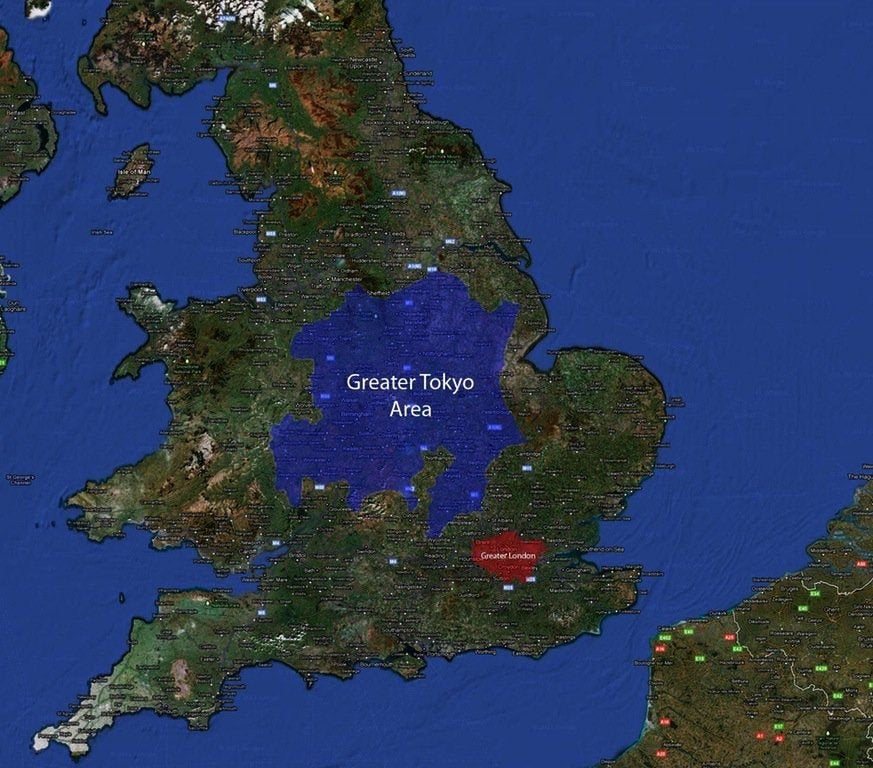Map by Reddit user EddR
Looking at this map overlay, your first reaction is probably disbelief. That massive blue area represents Greater Tokyo superimposed over England, and yes, it really is that enormous.
The tiny red speck? That’s Greater London, looking positively modest by comparison.
The Numbers Tell an Incredible Story
Greater Tokyo sprawls across approximately 13,500 square kilometers and houses around 37 million people. Greater London, by contrast, covers roughly 1,570 square kilometers with a population of about 9 million.
Put simply, Tokyo’s metropolitan area is nearly nine times larger in land area and holds four times as many people. When you see it visualized this way, the scale becomes almost incomprehensible.
How Did Tokyo Get So Big?
The expansion of Tokyo wasn’t accidental. After World War II, Japan experienced rapid economic growth, and Tokyo became the undisputed economic engine of the nation.
Unlike London, which grew organically over two millennia, Tokyo’s modern expansion happened in just a few decades. The government invested heavily in rail infrastructure, creating an intricate web of train lines that made it feasible to live far from the city center while still commuting for work.
This transportation network is key to understanding Tokyo’s sprawl. The city doesn’t just grow outward randomly. It expands along rail corridors, creating dense pockets of development around stations. This pattern allowed Tokyo to absorb neighboring cities and prefectures into one continuous urban landscape.
Urban Density and Design Philosophy
Here’s where it gets interesting: despite being much larger, Tokyo actually feels more organized than you might expect. Japanese urban planning emphasizes mixed use development. Residential areas, shops, and offices often exist side by side, reducing the need for long commutes and creating vibrant neighborhoods.
London, conversely, maintains stricter zoning in many areas and has preserved significant green spaces like Hyde Park and Richmond Park. The Green Belt policy around London has also limited outward expansion since the 1950s, keeping the city relatively compact compared to Tokyo’s unrestricted sprawl.
What This Means for Daily Life
Living in Greater Tokyo means you might spend two hours commuting each way, but you’ll have access to world class public transportation. The train system moves millions of people daily with legendary punctuality. In Greater London, commutes are generally shorter, but the transport system struggles more with capacity.
Both cities face housing challenges, but they manifest differently. Tokyo builds upward and outward constantly, keeping prices somewhat more manageable despite the enormous population. London’s constrained growth means housing costs have skyrocketed, pushing many residents to the outer boroughs or beyond.
The Takeaway
This map comparison isn’t just about size. It’s about two fundamentally different approaches to urban development. Tokyo represents unfettered growth enabled by infrastructure investment. London shows the results of centuries of history combined with deliberate growth management. Neither approach is inherently better, but both have shaped cities that successfully house millions while maintaining distinct characters and facing unique challenges.
Help us out by sharing this map:
